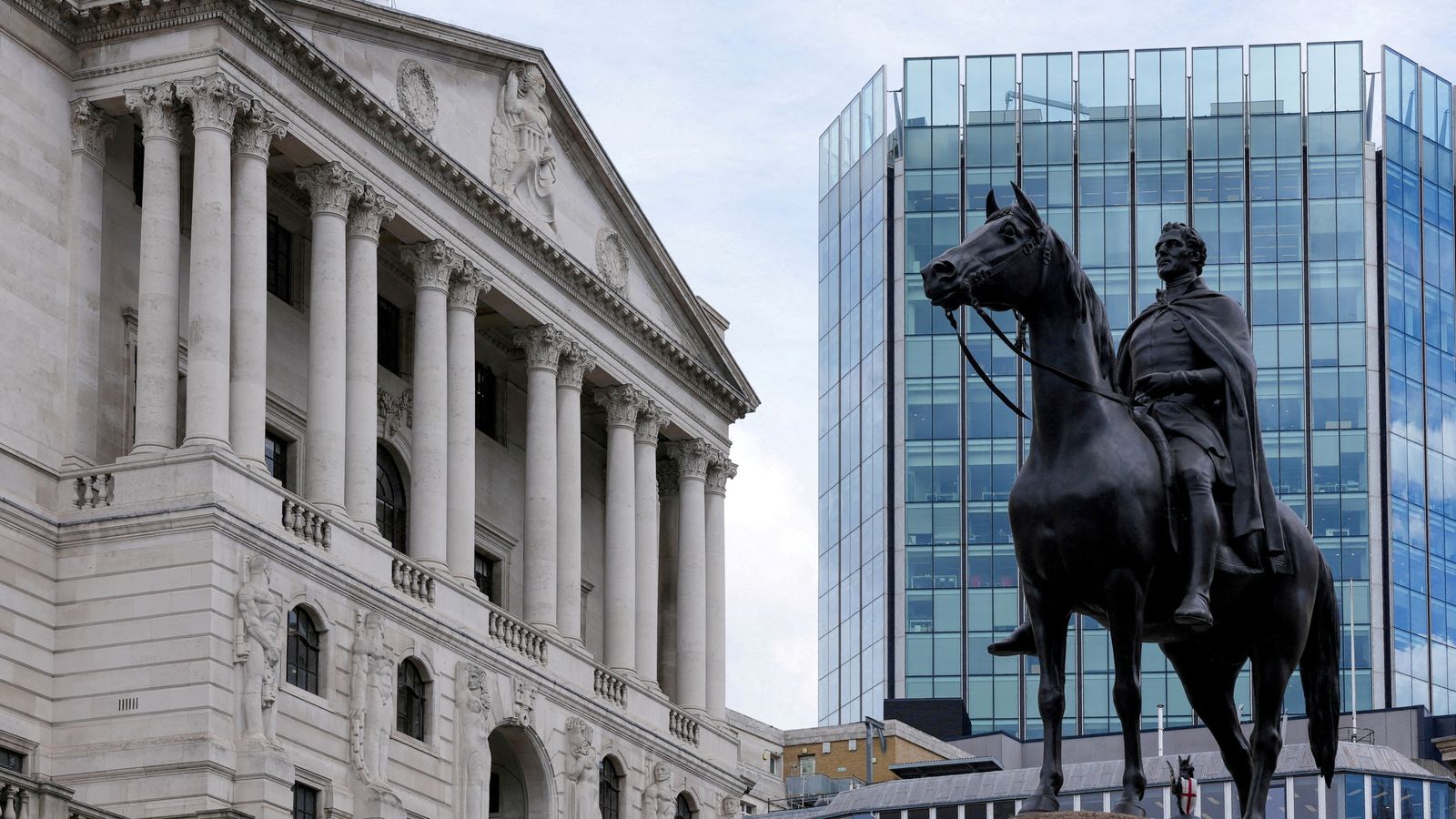Bank of England hints economic pain felt by many to be a long, drawn-out affair


Higher for longer.
The Bank of England may have lifted interest rates by less than a lot of people had been expecting up until recently – up by a quarter percentage point rather than a half – but for those with mortgages, the most striking thing from the trove of analysis they’ve published today isn’t about today but about tomorrow.
Because there are heavy hints dropped throughout the Bank’s Monetary Policy Report that it expects borrowing costs to stay high for a lot longer than many had anticipated.
Only a few months ago financial markets were betting that the Bank Rate – the official borrowing level set at Threadneedle Street – would be down to 4% by 2024 and 3.7% by 2025. Far higher than the post-financial crisis period but a fall all the same.
Now, those same markets think rates will still be at 5.9% in 2024 and at 5% by 2025. And rather than challenging those assumptions, the Bank has come as close as possible to reinforcing them.
This institution doesn’t provide explicit guidance about where it’s expecting interest rates to go; it prefers to drop hints. And the hint in the minutes alongside the decision today was about as heavy as you could get.
“The [Monetary Policy Committee] would ensure that Bank Rate was sufficiently restrictive for sufficiently long to return inflation to the 2% target sustainably in the medium term, in line with its remit.”
Higher for longer, in other words.
Why? Another clue is to be found elsewhere in the Bank’s forecasts today. It’s worth quoting at length: “Sharp increases in energy food and other import prices over the past two years have had second-round effects on domestic prices and wages.
Advertisement
“These second-round effects are likely to take longer to unwind than they did to emerge and the Monetary Policy Committee has placed weight in its recent forecasts on the risk that they might persist for longer.
“The committee now judges that some of this risk may have begun to crystallise.”
Please use Chrome browser for a more accessible video player
1:36
‘Interest rates are not going down anytime soon’
It fears, in other words, that the inflation cat is now out of the bag. And thus getting price rises to come down may involve considerably more work on its part than it previously anticipated. Higher for longer.
Which of course means pain for many households – especially those with mortgages and those renting (most landlords also have mortgages).
And unlike previous eras where most households were on floating rate mortgages and thus that pain was very quickly felt in their pockets, today that pain is being drip fed into the economy as two and five year fixed-rate mortgages gradually expire and are replaced with far more expensive monthly payments.
Read more from business:
Why renters are more vulnerable to interest rate rises
Effects of interest rate hikes pushing economy towards ‘recession’
The squeeze on renters is a symptom of Britain’s housing crisis
Again, that means the impact of these interest rate increases is going to be a long, drawn-out affair. And you can see the implications in the Bank’s economic forecast. The economy isn’t likely to face a recession, at least according to its central projection.
But it will essentially flatline – depressed by these higher rates – for three years, not showing meaningful growth until 2026.
It is a depressing prospect. Perhaps the best thing to hope for is that the Bank is wrong. This has happened before – indeed it’s already submitting to an independent inquiry into how it failed to foresee the recent spike in inflation, led by former Federal Reserve chairman Ben Bernanke.
It’s not altogether implausible that they fail to foresee a more meaningful economic recovery.